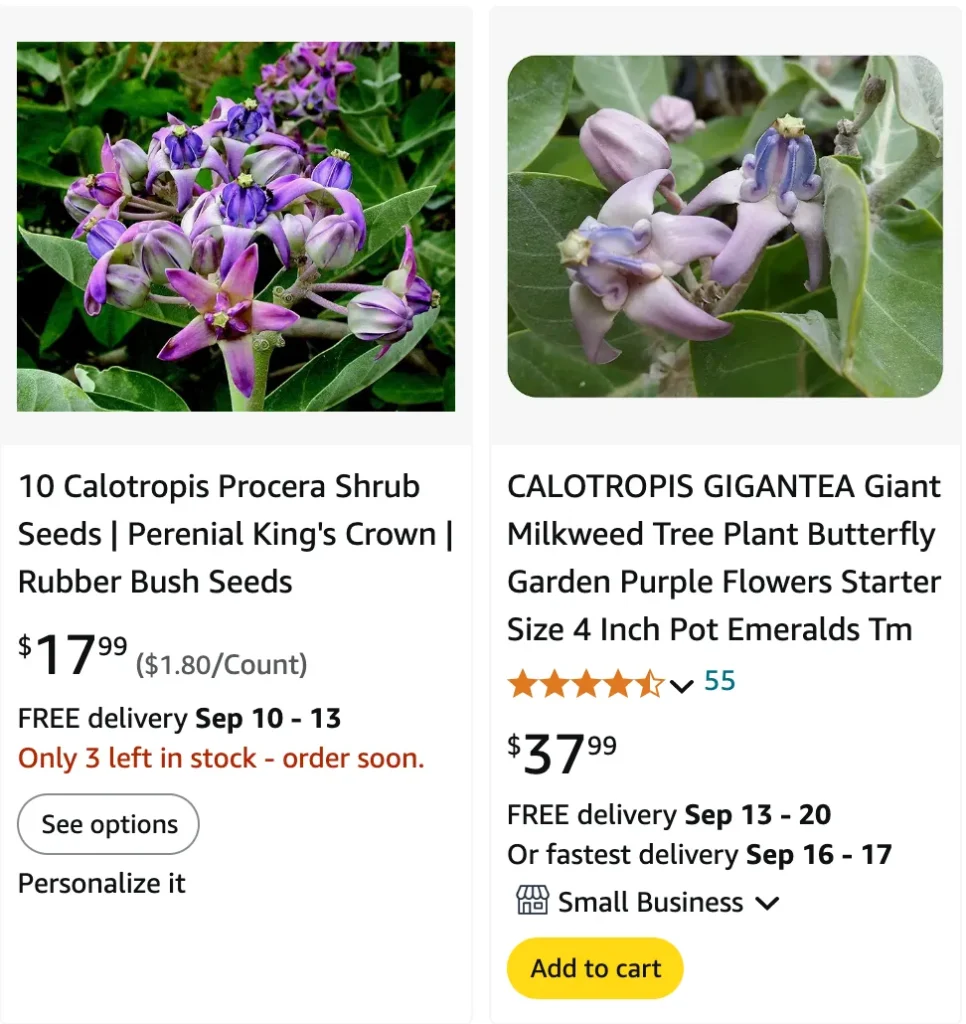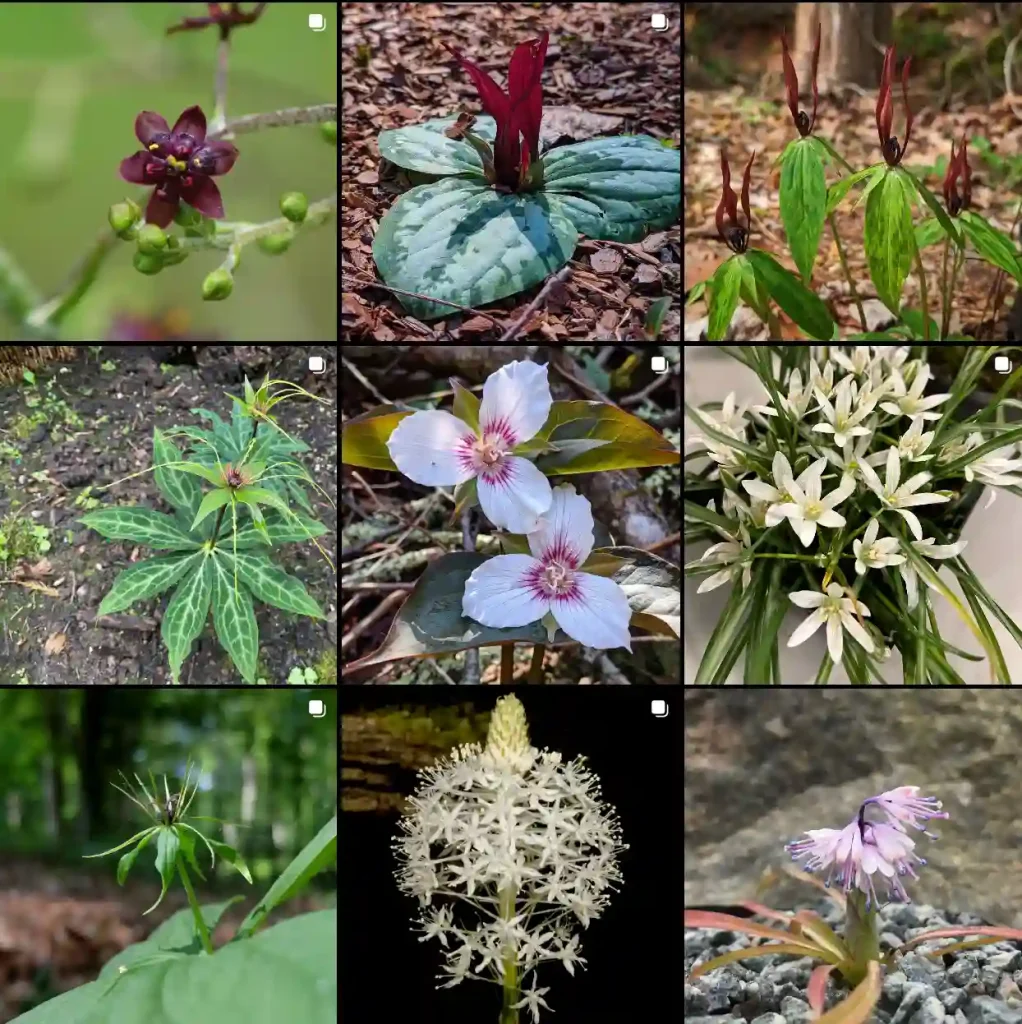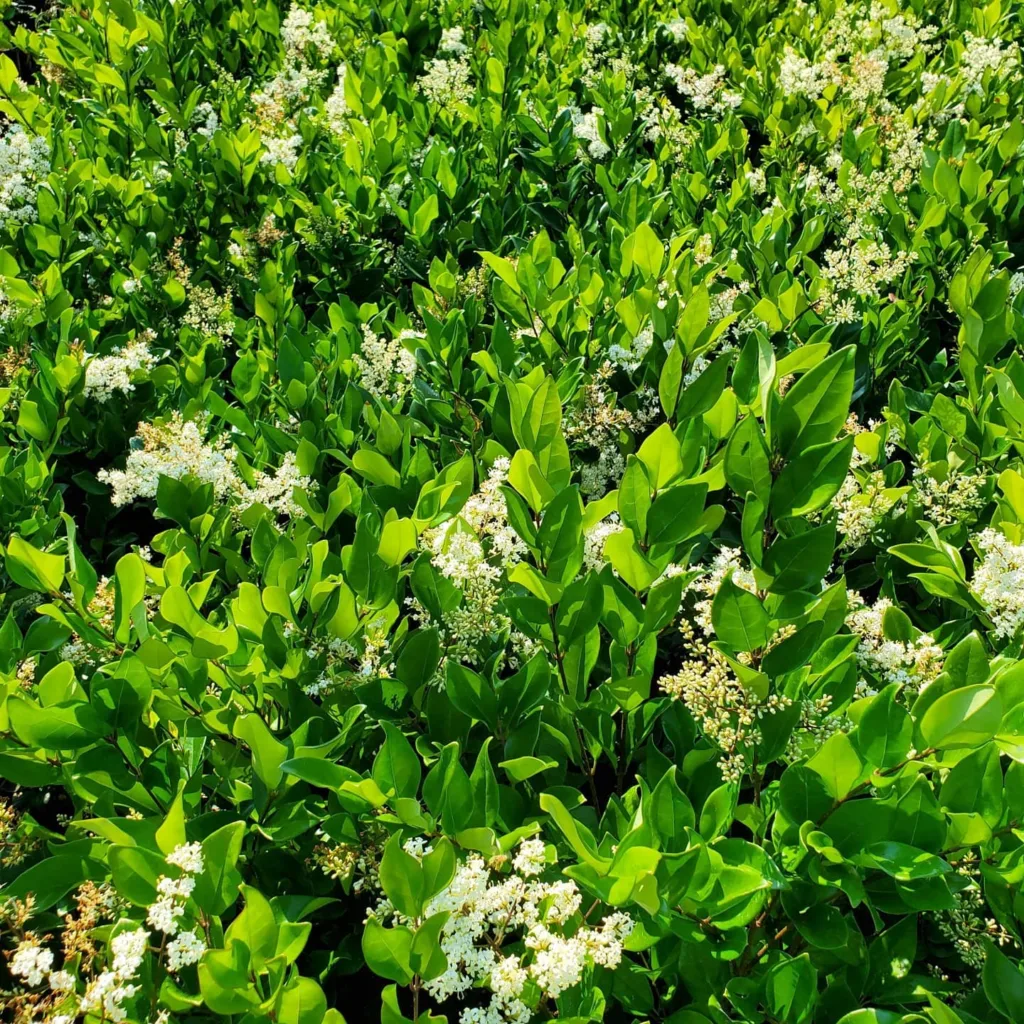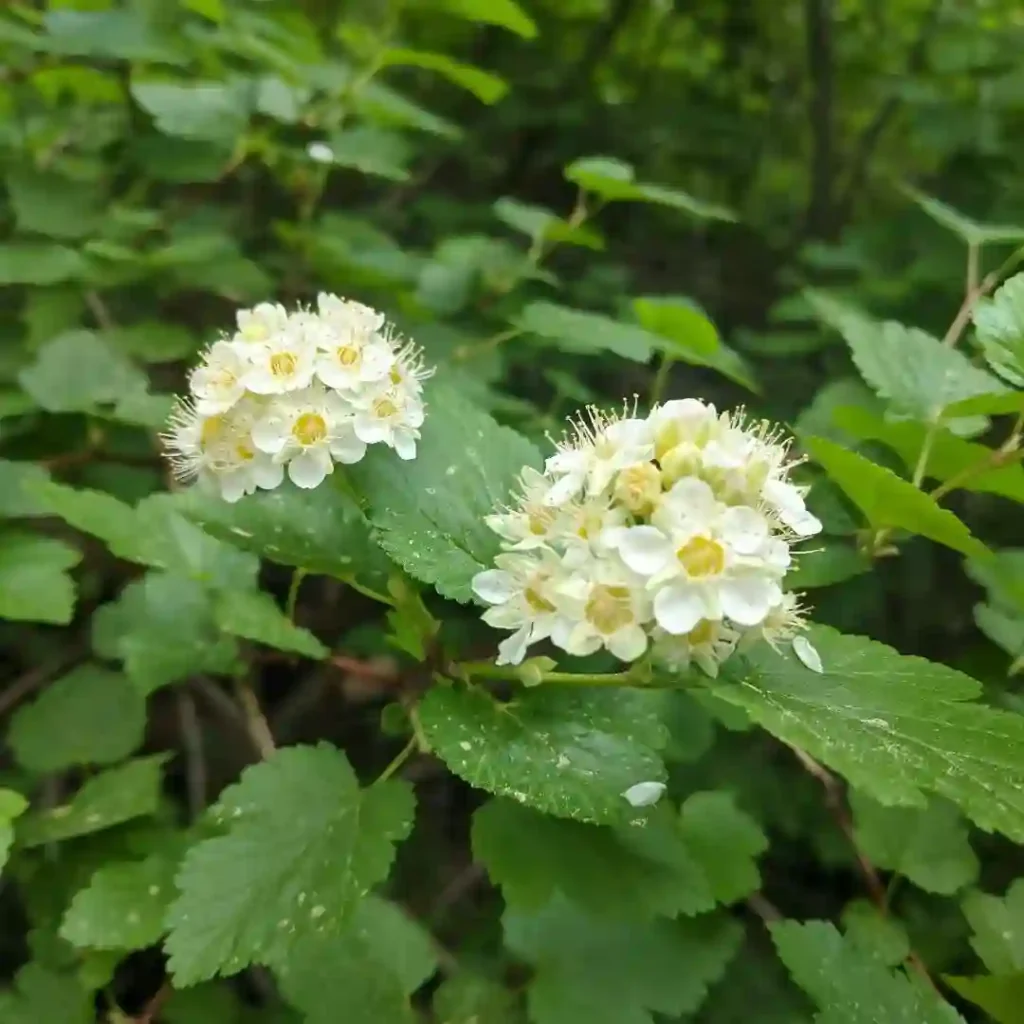
What is Calotropis Procera?
Calotropis Procera, commonly known as the Apple of Sodom or the Madar plant, is a robust, perennial shrub native to Africa and the Indian subcontinent. This plant is well-known for its large, leathery leaves and clusters of waxy, fragrant flowers. The Apple of Sodom can reach heights of up to 10 feet and is admired for its resilience in harsh conditions, making it a popular choice in arid climates.
3 Species in Genus Calotropis
How to Grow Calotropis Procera from Seed?
Growing Calotropis Procera from seed is a rewarding process that starts with the right preparation. Begin by sourcing fresh seeds from a reputable supplier. Soak the seeds in water for about 24 hours to enhance germination. This softens the seed coat and speeds up the process.
Next, fill seed trays or pots with a well-draining potting mix. A blend of sand, perlite, and peat works well. Scatter the seeds on the surface and lightly press them into the soil. Cover the tray or pot with a clear plastic wrap to maintain humidity and place it in a warm, sunny location. Germination usually takes between 2 to 4 weeks. Once seedlings emerge, remove the plastic wrap and continue to keep them in a sunny spot, watering regularly but avoiding waterlogging.
How to Care for Calotropis Procera?
Calotropis Procera thrives in full sun and well-drained soil. It’s a hardy plant that can tolerate drought, but it prefers regular watering during the growing season. Fertilize it with a balanced, slow-release fertilizer to encourage robust growth and flowering.
Pruning is essential to maintain its shape and encourage bushier growth. Remove dead or damaged branches and spent flowers to promote new blooms. Be cautious when handling the plant, as the latex sap can cause skin irritation.
How to Propagate Calotropis Procera?
In addition to growing from seed, Calotropis Procera can be propagated through stem cuttings. Take healthy, semi-hardwood cuttings in the spring or early summer. Dip the cut end in rooting hormone and plant it in a pot with a well-draining soil mix. Keep the soil moist and place the pot in a warm, shaded area until roots develop. Once the new plant is established, it can be transplanted to its permanent location.
What is Calotropis Procera Extract?
Calotropis Procera extract is derived from the plant’s leaves and stems. This extract is known for its medicinal properties and has been used in traditional medicine for various purposes. It contains compounds that are believed to have anti-inflammatory, anti-bacterial, and anti-fungal properties. However, its use should be approached with caution, as the plant can be toxic if ingested in large quantities.
Can You Grow Calotropis Procera Indoors?
Growing Calotropis Procera indoors can be challenging due to its size and light requirements. It needs a lot of sunlight to thrive, which can be difficult to provide indoors. If you have a very sunny room or access to a grow light, it might be possible, but keep in mind that it may not reach its full potential size or flowering capacity in an indoor setting.
Is Calotropis Procera Toxic?
Yes, Calotropis Procera is toxic. The plant contains latex, which can be irritating to the skin and mucous membranes. Ingesting any part of the plant can cause severe gastrointestinal distress, including nausea and vomiting. It is essential to handle the plant with care, especially if you have children or pets who might come into contact with it.
Benefits of Calotropis Procera
Despite its toxicity, Calotropis Procera has several benefits. It is used in traditional medicine for its potential therapeutic properties. The plant is also valued for its ornamental appeal, with its striking flowers and large leaves adding an exotic touch to gardens.
Common Problems with Calotropis Procera
One common issue with Calotropis Procera is susceptibility to pests such as spider mites and aphids. Regular inspection and the use of appropriate insecticidal treatments can help manage these problems. Additionally, overwatering can lead to root rot, so it is crucial to ensure that the plant is grown in well-drained soil.
Comparing Calotropis Procera with Similar Plants
Calotropis Procera is often compared with other hardy, drought-tolerant plants like Euphorbia and Asclepias. While these plants also have attractive foliage and flowers, they differ in their specific care requirements and toxicity levels. Euphorbia, for example, has a milky sap similar to Calotropis Procera but often requires different growing conditions.
In conclusion, Calotropis Procera is a fascinating plant with unique characteristics and benefits. Understanding its needs and potential issues will help you make the most of this resilient shrub in your garden or landscape.
If i die, water my plants!



